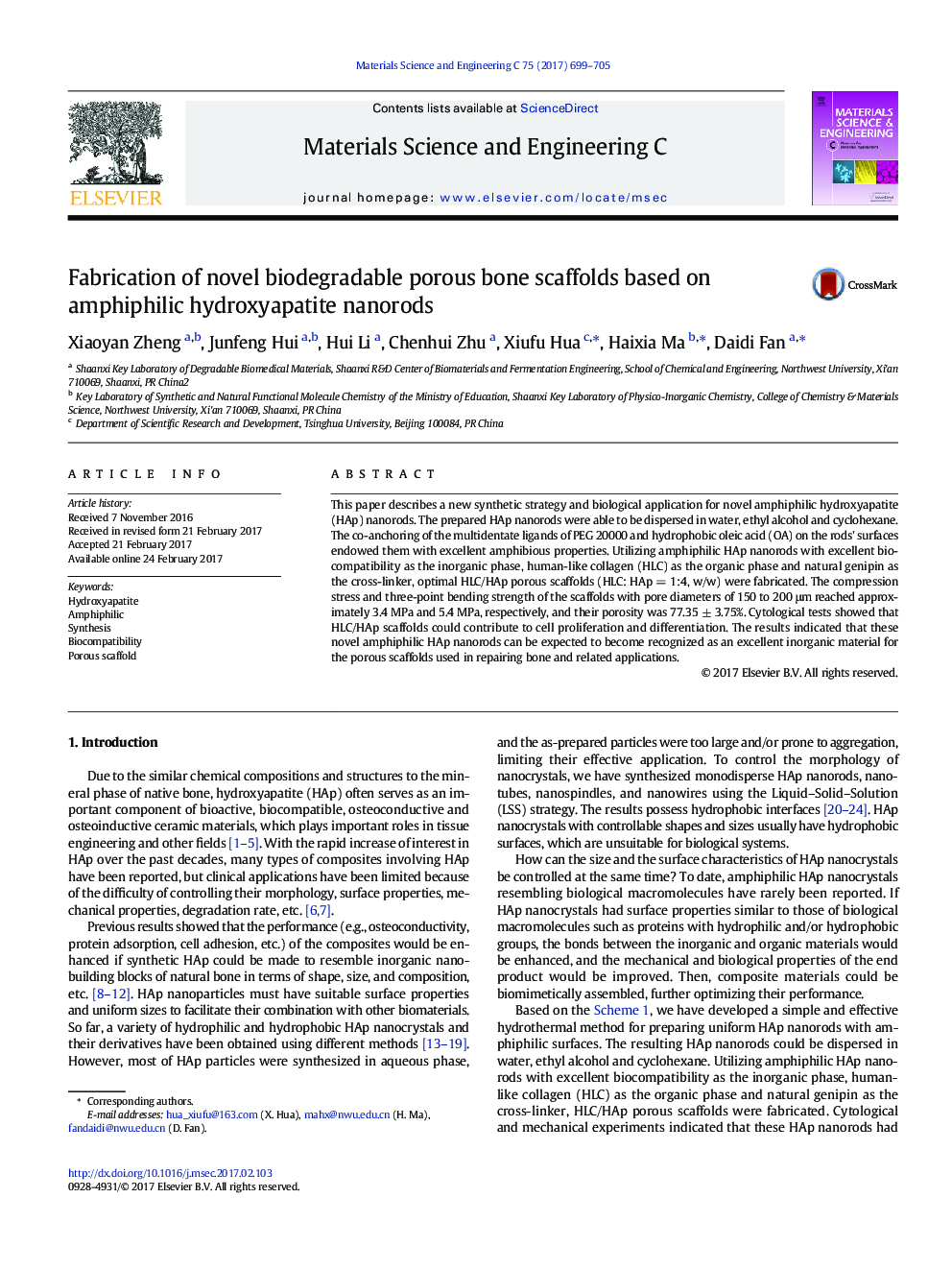| Article ID | Journal | Published Year | Pages | File Type |
|---|---|---|---|---|
| 5434873 | Materials Science and Engineering: C | 2017 | 7 Pages |
â¢A simple and effective hydrothermal method was developed for preparing uniform HAp nanorods with amphiphilic surfaces.â¢The synthesized amphiphilic HAp nanorods could be dispersed in water, ethyl alcohol or cyclohexane.â¢The prepared HLC/HAp porous scaffolds had good mechanical properties, biocompatibility and osteoconductive etc.
This paper describes a new synthetic strategy and biological application for novel amphiphilic hydroxyapatite (HAp) nanorods. The prepared HAp nanorods were able to be dispersed in water, ethyl alcohol and cyclohexane. The co-anchoring of the multidentate ligands of PEG 20000 and hydrophobic oleic acid (OA) on the rods' surfaces endowed them with excellent amphibious properties. Utilizing amphiphilic HAp nanorods with excellent biocompatibility as the inorganic phase, human-like collagen (HLC) as the organic phase and natural genipin as the cross-linker, optimal HLC/HAp porous scaffolds (HLC: HAp = 1:4, w/w) were fabricated. The compression stress and three-point bending strength of the scaffolds with pore diameters of 150 to 200 μm reached approximately 3.4 MPa and 5.4 MPa, respectively, and their porosity was 77.35 ± 3.75%. Cytological tests showed that HLC/HAp scaffolds could contribute to cell proliferation and differentiation. The results indicated that these novel amphiphilic HAp nanorods can be expected to become recognized as an excellent inorganic material for the porous scaffolds used in repairing bone and related applications.
Graphical abstractDownload high-res image (168KB)Download full-size image
